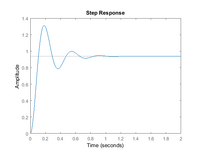Droop, droop, droop. Only droop.
The operators corrected the frequency manually if they noticed an error and at least every 15 minutes when they made the log entries.
While the Woodard governors were capable of reset, integral or isochronous (All the same, depending on the industry and era.) we never used isochronous.
Using isochronous would entail training beyond the capabilities of our operators.
The way our sets were operated to support varying loads would entail changing the swing set more than once a day.
These guys sometimes had trouble synchronizing, let alone any governor adjustments.
At 3% droop, we never went much beyond 59 Hz to 61 Hz. Our customers liked to complain about our service and were nor shy about doing so. No-one ever noticed the small frequency shifts.
A common complaint was power surges burning out refrigerators.
Actually it was not surges but low voltage.
We had a couple of large plants with wye/delta transformer banks.
Our plant could not take the block load of the system coming back online after an outage.
The load was picked up one phase at a time by closing overhead cutouts with a hot stick.
What happens when you supply one phase of a wye/delta bank?
The transformer bank back-feeds the two open phases with about 50% voltage.
After an outage of any duration, most of the refrigerators are wanting to start.
Hit then with 50% voltage and they just build up enough head pressure to stall.
Now on a rainy night, with a long hotstick, working by the light of flashlights, it takes enough time to move the hotstick from the just closed cutout to the next open cutout to start heating up the refrigerator motors.
Now the second cutout is closed and the refrigerators get full or almost full voltage, but many of them stay stalled.
No problem, the thermal cutout protects them, (until it doesn't).
Several times a year, a refrigerator somewhere on the system would fail.
I inherited that system.
It took a couple of years to get the customers with wye/delta transformer banks switched over to wye/wye banks and that problem went away.
Yes, lots of complaints but never a complaint about frequency.
Where I’ve been able to I’ve substituted 1% droop for isoc.
Even that was far beyond the capability of our operators, but we got by.

